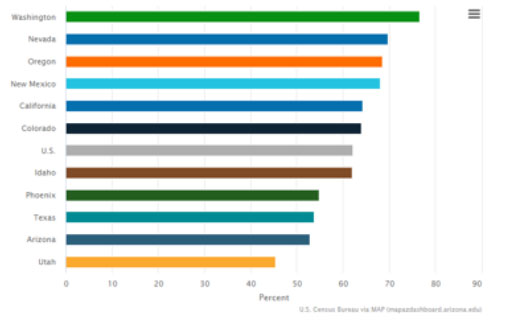Jennifer Pullen, Senior Research Economist and MAP Dashboard Coordinator
It has been one year since the coronavirus pandemic began to impact the daily lives of school-age children across the U.S. That impact has not been felt evenly. In early March 2021, only 5% of households with school-age children in Arizona reported that there had been no impact from the coronavirus on how their child received an education. In contrast, approximately 17% of households in Idaho and Utah reported no impact. Nationally, the rate was 10%.
Nearly all school districts over the past year have held classes remotely at some point. In many cases, distance learning has been the only option for households. Of the Arizona households that reported their school-age children were distance learning at the beginning of March, nearly 80% were doing so online and had frequent live contact with a teacher. There have been many challenges with distance learning, in particular, access to both a computer and internet access is vital for the success of these children. Many school districts have provided both computers and internet hot-spots to families in need, though significant variation exists among the states. In Washington, 76.7% of households with children that are distance learning reported that a computer was provided by the school or school district. That fell to 52.8% for Arizona households. Only one western state, Utah, had a lower percentage of households at 45.4% (Figure 1).
Figure 1: Computer Provided by School or School District (February 17, 2021 – March 1, 2021)

To learn more, check out the latest MAP article on Distance Learning: How COVID-19 Impacts Arizona Students. Also, don’t miss the upcoming MAP Talk on COVID-19’s Impact on Education on March 31st, 2021 with Superintendent Baker from the Flowing Wells school-district.





